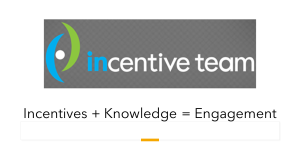Engagementís Emerging Role in Corporate Wellness
A shift is taking place in workplace wellness related to the concept of Enterprise Engagement, linking wellness strategies to an organization’s culture, retention, productivity, performance and even customer and employee satisfaction.
By Amy Kramer & Paula Godar
Wellness goes beyond the obvious benefits of lowering healthcare claims, cutting lost time due to illness, or worse. Wellness strategies provide organizations a unique opportunity to help promote better health practices, prevent disease and better the lives of their employees – and that’s good for everyone.
The new approach to wellness is holistic: it considers the whole person – both their mental and physical well-being. It places emphasis and responsibility on individuals to take ownership of their health. Wellness becomes tied into your organization’s value systems and can influence outcomes at your organization and improve the quality of life for your people. Wellness programs provide a so-called “virtuous circle” because they’re good for people and for business.
According to a 2010 study by Harvard Business School professors Katherine Baicker, David Cutler and Zurui Song entitled Workplace Wellness Programs Can Generate Savings, properly designed wellness programs can yield healthcare cost savings of $3.27 for every dollar invested, as well as $2.37 in reduced absenteeism costs. The study also noted that in 2006 only 19% of companies with 500 or more workers offered wellness programs, while a 2008 survey of large manufacturing companies revealed 77% offered some kind of formal health and wellness program – and the percentage is likely even higher today. The most common interventions at the time of the HBS study included: 1) health risk assessments, in which each person’s condition is tracked; 2) providing self-help information; and 3) offering health-related incentives.
It’s A Process
Promoting wellness isn’t simply a “do-this, get-that” proposition. It’s a process that addresses all of the issues required for humans to change behavior. Based on a study conducted by Maritz Research in 2011, wellness programs should focus on four specific drivers that contribute to good health:
- physical activity
- mental well-being
- prevention
- nutrition
Start by understanding that improving health is one of the greatest challenges most individuals face. Improvement comes incrementally, one human being at a time, and any progress is worthy of celebration. Effective wellness strategies utilize engagement elements, connecting goals with strategies that shape people’s behavior and choice in “owning” wellness and participating in the activities aimed at health promotion and prevention. Effective wellness program tactics incorporate attention, goal commitment, feedback and reward mechanics as a means of gaining and maintaining engagement to take people through the progression of change. Programs must also be fair and fun to create the mindset that living healthier is a positive experience and not a burden.
The Shift In Emphasis
In the past, most organizations implemented wellness strategies to manage costs related to healthcare claims, productivity and absenteeism – and there’s ample research to support that investment. Today, however, a shift is taking place in workplace wellness related to the concept of Enterprise Engagement – i.e., the linking of wellness strategies to an organization’s culture, retention, productivity, performance and even customer and employee satisfaction. These elements can lead to long-term growth within an organization, and as a result not only create healthier employees, lower healthcare claims and decrease in absenteeism, but also increased productivity and a sense of purpose.
Wellness programs are also a unique way to increase levels of “task value” that research has demonstrated is important to long-term engagement. The fact is that many jobs are boring and repetitive, so aside from doing everything possible to address this, organizations can counteract drudgery by giving people a sense of purpose – not only through the contribution they’re making to the organization and their livelihood, but also to their personal well-being.
Ideal Outcomes
The best outcomes of wellness strategies include:
- Personal ownership and accountability in a person’s own health.
- Preventative care – more doctor checkups, less acute care and emergencies, which can be tracked and accounted for in healthcare claims. It’s not minimizing claims, so to speak, but shifting from a higher number of incident claims to more preventative claims.
- Improved health conditions through physical activity and better nutrition.
- Improved mental well-being, with reduced stress and happier employees.
From an organization-wide perspective, the opportunity is to make wellness part of the culture and to shift thinking from short-term to long-term healthy behavior among employees. This shift in culture helps foster engagement and a level of wellness that can lower absenteeism, improve employee retention and satisfaction, and increase productivity. Wellness strategies create better lives for employees and produce better business outcomes as a result.
Driving Commitment
Leveraging mission, vision and values and tying wellness strategies in with an organization’s culture are key to maximizing the benefits of wellness programs. But the existence of wellness programs alone isn’t enough to drive commitment and engagement in employee wellness, especially given the average individual’s natural resistance to the dietary and exercise changes they need to make to optimize their health.
Organizations can provide the reinforcement and support necessary to get people to engage by helping them set realistic goals, giving them the tools and feedback to they need to progress, providing meaningful rewards, social and cultural support, and feedback. Just having a program won’t create a sustainable return on investment. Promoting healthy behaviors and helping individuals weave wellness into the fabric of their personal and professional lives provides the best results.
The Foundation Of Success
A successful wellness program can include many components, but any wellness strategy should address the four key areas mentioned earlier – prevention, nutrition, physical activity and mental well-being. A one-size-fits-all approach to wellness is the sure way to failure. People should have the right to choose which area of wellness they want to focus on.
For prevention, people tend to align with behaviors aimed at lowering healthcare costs – preventative exams, coaching, disease management, regular check-ups with their physicians, etc. Programs might also offer health risk assessments in which individual’s biggest issues are documented. These aren’t enough to drive long-term change, but they’re a great start to helping promote long-term health by identifying priorities.
For nutrition, people should have an opportunity to learn about healthier eating, how to change eating habits, coaching to promote long-term change and even changes in the choice of food available on company premises. Physical activity is the easiest to engage in, but it often requires social support and accountability to encourage adoption and sustained behaviors. Finally, mental well-being and stress management are key to holistic wellness. The effort should include components that maximize mental health, which can start with a regular exercise program and outdoor activities.
Step By Step
Here is a quick step-by-step guide to developing an effective wellness program:
1. Goals and Objectives. Establish clear goals and objectives for your effort in terms of quantitative and qualitative results, including general employee engagement. You don’t want to set goals that would encourage people to forgo health treatment. Your wellness program should have a business plan just like any major initiative. A key issue to address is how people can select a specific health initiative they can focus on rather than giving them more goals than they could possibly achieve.
2. Assessment and Coaching. How will you be able to assess engagement in the effort in terms of active participation by managers and employees? What types of coaching resources can you make available to individuals to support their individual efforts? What type of long-term assessment can you implement? Can it be included in general employee engagement assessment?
3. Communication. What strategies make sense to reach your particular audience? Can your company provide a wellness portal featuring news about the program and success stories; how-to information; social media features for mutual encouragement; and manager-to-employee and even peer-to-peer recognition?
4. Learning. Making information quickly available related to a person’s specific goal or any goal – preferably on your wellness portal so everything is in one place – is critical. The wellness portal can provide tests where people can receive points for getting a passing grade. Games can be worked into your program to help people encourage one another.
5. Collaboration and Innovation. Can you create opportunities for people to work together, such as with lunchtime walks, exercise groups, or other activities? How can you make sure that people are continually encouraged to come up with ways to improve the program? Make it easy for people to submit case studies of their success stories, and even reward people who do. Your wellness portal can include news feeds and conversations between employees on how they’re addressing their goals.
6. Rewards and Recognition. How can you add to the fun and satisfaction by enabling people to reap the rewards of their efforts in ways that won’t get lost in their monthly bills – some sort of experience or tangible reward that can be enjoyed by significant others and that evokes memories or long-term satisfaction. Make sure it’s commensurate with the level of achievement and that it has a personal touch. Weaving wellness into existing recognition platforms is an opportunity to leverage peer-to-peer reinforcement and manager support for people seeking to hit certain health goals.
7. Measurement and ROI. Based on the goals and objectives in your business plan, what is occurring over time? What is the level of usage of the wellness portal? What are people accessing in terms of information? Are they responding to the engagement surveys? What are those surveys telling you? What is happening to your claims activity over time? What is happening to your lost time due to sickness numbers?
Behavior Changes
A study of employees participating in a wellness program conducted by Emily Falk, a University of Michigan neuroscientist, for Maritz Motivation Solutions, found that:
- People who were rewarded walked an average of one mile more per day than those who didn’t receive rewards
- People who were rewarded for keeping a health journal completed their tasks 25% more often
- People who chose their wellness activity had higher goal completion
- People who had social support had an increase in average daily steps over those who didn’t
- One in three participants reported weight loss, one in two reported having more energy and more than 50% reported having a more positive mindset
- People with pedometers were more likely to discuss the wellness program; share success stories and compare activity.
This article is excerpted from Enterprise Engagement: The Textbook, published for the Enterprise Engagement Alliance by Engagement Enterprises LLC. More information is available at www.createspace.com/4718483

















